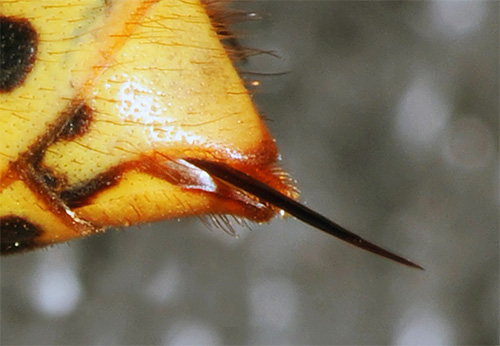
The sting of a hornet is the main and practically the only means of self-defense for this insect. For hunting and food production, the hornet rarely uses it. However, the presence of a very strong poison, as well as the fact that the sting is perfectly adapted to penetrate the integument of other animals, indicate that the hornets have to constantly defend themselves or their nest.
In the photo - a hornet sting at a sufficiently high magnification:

The hornet is an insect as a whole not aggressive, its sting is used only when it is impossible to hide from an attack or when protecting a nest. This feature suggests that if a hornet has stung, it is the stung one who is to blame for this - without a serious reason, the insect will not attack.
At the same time, despite its peaceful nature, the stinging hornet is very dangerous: even in insect-resistant people, hornet stinging causes extensive swelling and acute pain. People whose immunity is not able to resist insect bites risk getting a severe allergic reaction.
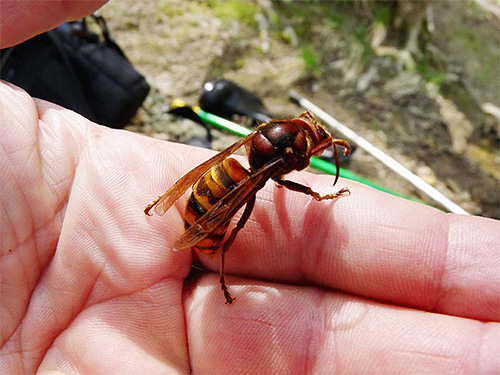

Most victims of the hornet sting experience fever, chills, dizziness, headaches, and in especially serious cases, anaphylactic shock and Quincke's edema, which, unfortunately, can be fatal for a stung person.
On a note
As a result of hornet stings, people around the world regularly die. Most of the victims are in Southeast Asia: in Japan alone, more than 40 people die every year from the bites of local hornets. A similar situation is observed in some provinces of China. If a person is hypersensitive to insect venom, death can also occur from a meeting with an ordinary European hornet, but such cases are extremely rare.
It is worth noting that the symptoms of intoxication with hornet and bee venoms are similar, but the process of stinging and the sting itself differ from their analogues in bees.
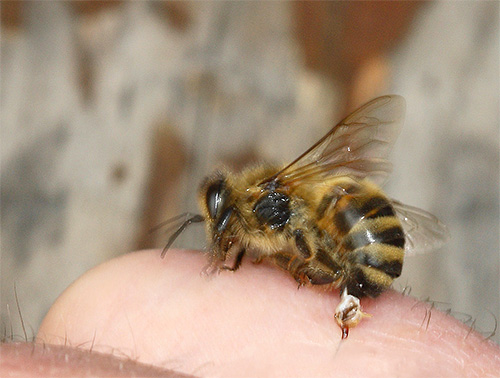

If a bee can sting only once in a lifetime, then the sting of a hornet is a reusable weapon. Some species of these insects, when in danger, sting at a speed of several injections per second without harm to their health. The reason for this is the special structure of the hornet's sting.
Photo and anatomy of a hornet sting
The sting of a hornet is a modified ovipositor connected to a special poisonous gland. Unlike riders - related insects - hornets in a calm state are able to hide the sting in the abdomen and push it out only to sting the offender. Riders are not able to draw their sting into the body cavity.
In the photo below - the sting of an ordinary hornet:
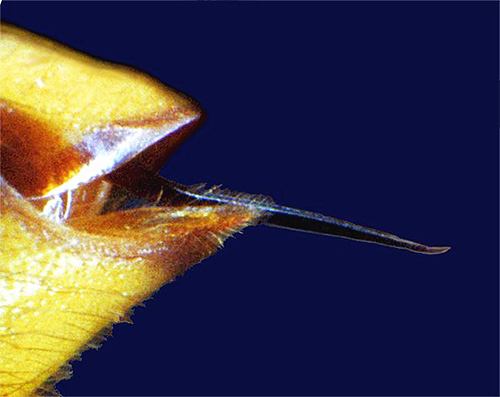
The length of the sting in different types of hornets varies: in the European it reaches 3-6 mm, and, for example, in the giant Asian hornet - up to 8 mm.The sting of representatives of the latter species is considered one of the largest in the entire detachment.
The sting of a huge hornet can be seen in the photo:
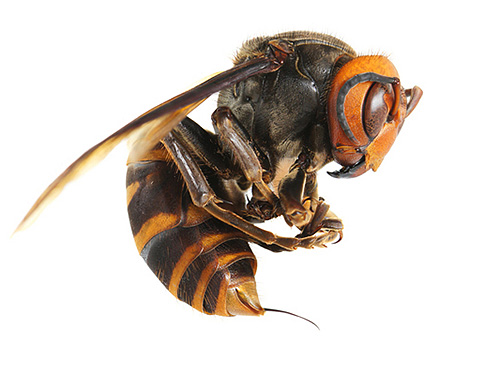
What other features does a hornet weapon have? This insect has a smooth sting that does not have notches and spines. Thanks to this structure, after a bite, the hornet easily removes the sting from the wound and can sting again. In this way, his weapon compares favorably with that of the honey bee: its sting has a sawtooth shape and gets stuck in thick human skin.
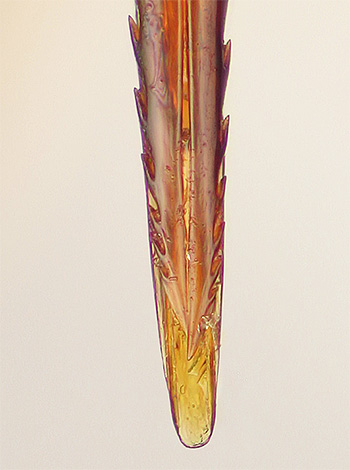
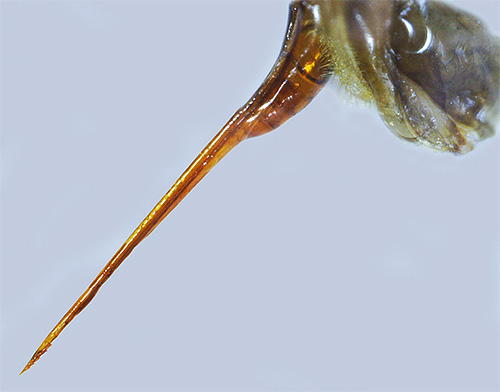
After a bite, the bee dies after a few minutes, because due to structural features, its sting comes off with part of the internal organs.
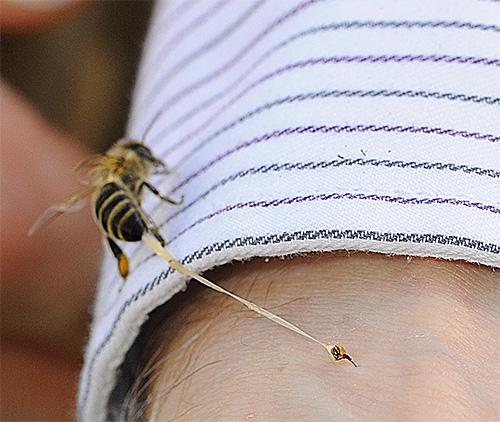
On a note
For a bee, only an attack on mammals with thick skin is fatal. At the same time, the bee calmly takes out the stinger from the integuments of the body of insects and can use it in the future.
It was the hornet's ability to sting several times that led to the misconception that the hornet has several stings. But this is not at all the case: if for some reason the hornet loses its sting, it will die, like a bee.
Another feature of the hornet's anatomy is that its sting is connected to a special gland that produces poison as needed.
The hornet always has a toxin in stock, the amount of which is enough for 4-5 bites. Thanks to the proper functioning of the gland, within a few hours after stinging, the spent poison is completely replenished.
Sting at work: how does the "bite" of a hornet happen
The release of poison from the sting occurs as a result of contraction of the muscle surrounding the venom gland. Hornet is able to fully control this process.
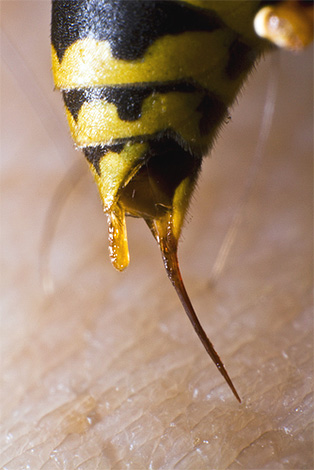
The sting extends from the end of the abdomen as soon as the insect decides to sting the offender or victim. However, usually the hornet still prefers to kill prey with its jaws, albeit for quite a long time, rather than using a sting. This suggests that the insect is very economical with its poison and spends it only in exceptional cases.
Here is another photo of a hornet sting (with a drop of poison on the end):
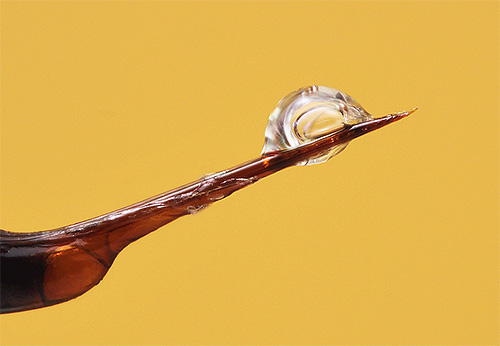
On a note
For one bite, the hornet injects 0.5 mg of a poisonous substance into the body of the victim. The dry weight of the poison in this case is 0.19 mg. This is enough to cause a general allergic reaction.
After introducing its weapon into the body of the victim, the hornet releases a drop of poison, and then takes out the sting. Due to the presence of acetylcholine, the toxin instantly acts on the nerve endings at the site of the bite and causes pain even before the sting is removed from under the skin.
The video clearly shows how the hornet stings:
The mechanism of action of the sting of a giant hornet
If the danger has not passed, the hornet stings again. This tactic is more effective than simply squirting the poison into the water in the same place without removing the stinger. This is due to the fact that the effect of the toxin with this method of damage extends to all new nerve endings, which only increases the pain.
On a note
The stinging hornet, like the stinging bee, are well-recognized symbols in certain circles. A tattoo with a stinging hornet means that a person is calm, hardworking and clean, but if necessary, can be tough and able to protect himself and his interests. This tattoo is very common among the Japanese Yakuza mafia.
A little about the functions of the sting
The hornet is an active predator, and therefore its sting is more often used for food production, and not for protection. However, in the vast majority of cases, the hornet has to use its weapon only when its victim is too large or well protected by a dense shell. To kill smaller prey, it completely manages with jaws alone.
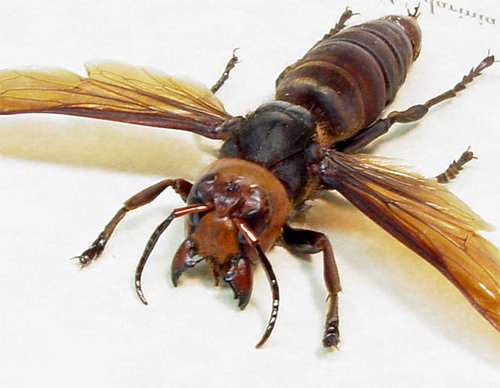
For clarity, we can give the following example: when attacking spiders or bumblebees that can give a worthy rebuff, the hornet is forced to use a sting. If the hornets attack a bee hive, each of the predators can destroy up to a thousand bees without a single sting, killing only with their jaws.

It is worth noting that for most hornets, protection with a sting does not come all their lives - few people attack these insects. But the hornet has to use poison for food production almost daily.
On a note
Each hornet catches up to 15-20 insects per day. Of these, at least 1-2 are too large to be handled only with the help of jaws.
First aid rules for hornet bites
If the hornet nevertheless stung, the first step is to immediately treat the wound. It makes no sense to waste time and look for the sting itself - the insect must have taken it with it.
Moreover, you should not put pressure on the stung place, trying to squeeze out the poison. Such an action will lead to increased blood circulation and, as a result, accelerate the spread of the toxin under the skin.
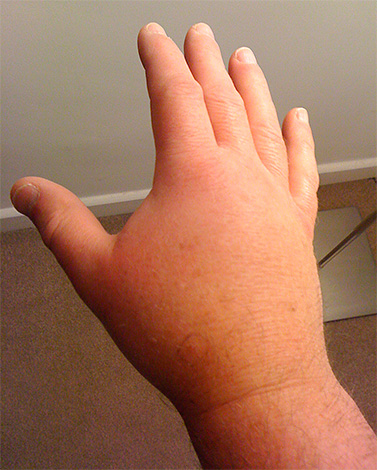
The first steps in the bite of a hornet should be as follows:
- Treat the bite site with acetic or citric acid, then with alcohol or hydrogen peroxide.
- Apply wet sugar for a few minutes, and a cold compress on top.
- Treat the skin around the bite with Fenistil or Soventol gels.
- Drink as much water or sweet tea as possible.
At the first symptoms of an allergic reaction - dizziness, nausea, fever - the victim should be taken to the hospital as soon as possible. It is not worth using symptomatic treatment in this case, since it is not known how the body can react to additional substances. The only drugs that you can drink at the onset of an allergy are Suprastin and Diphenhydramine. They will help reduce the strength of the manifestation of the reaction of the body.

The main thing when stinging with a hornet is not to ignore the clear symptoms of toxin poisoning. An allergic reaction to insect venom can develop even in a physically strong and healthy person, and with each new bite it will become stronger. Be attentive to yourself and your health, make sure that the consequences are not too serious!
Useful video: a hornet bite can really be fatal to humans




"The length of the sting in different types of hornets varies: in the European it reaches only 1.5-2 mm." Not true. I actually measured it - at least 5-6 mm (for ours, European).
Thanks for the info! Once again, we studied this issue and made adjustments to the text of the article: with full extension, it is really much more than 2 mm.
Thanks for the article, learned a lot! Now I will definitely run around the garden screaming 😀 Thank you very much, I especially liked that the photo was attached to the description, the author of this article is a big plus!
I agree, but you forgot that the hornet KILLS.
I am a Crimean, I remember in my childhood (mid-1970s, Evpatoria) at the age of 10 we hunted hornets, knocked down thistles with stones. Painted like a common wasp, but huge, hairy and triple sting. Three needles emerge from the abdomen. I remember exactly.